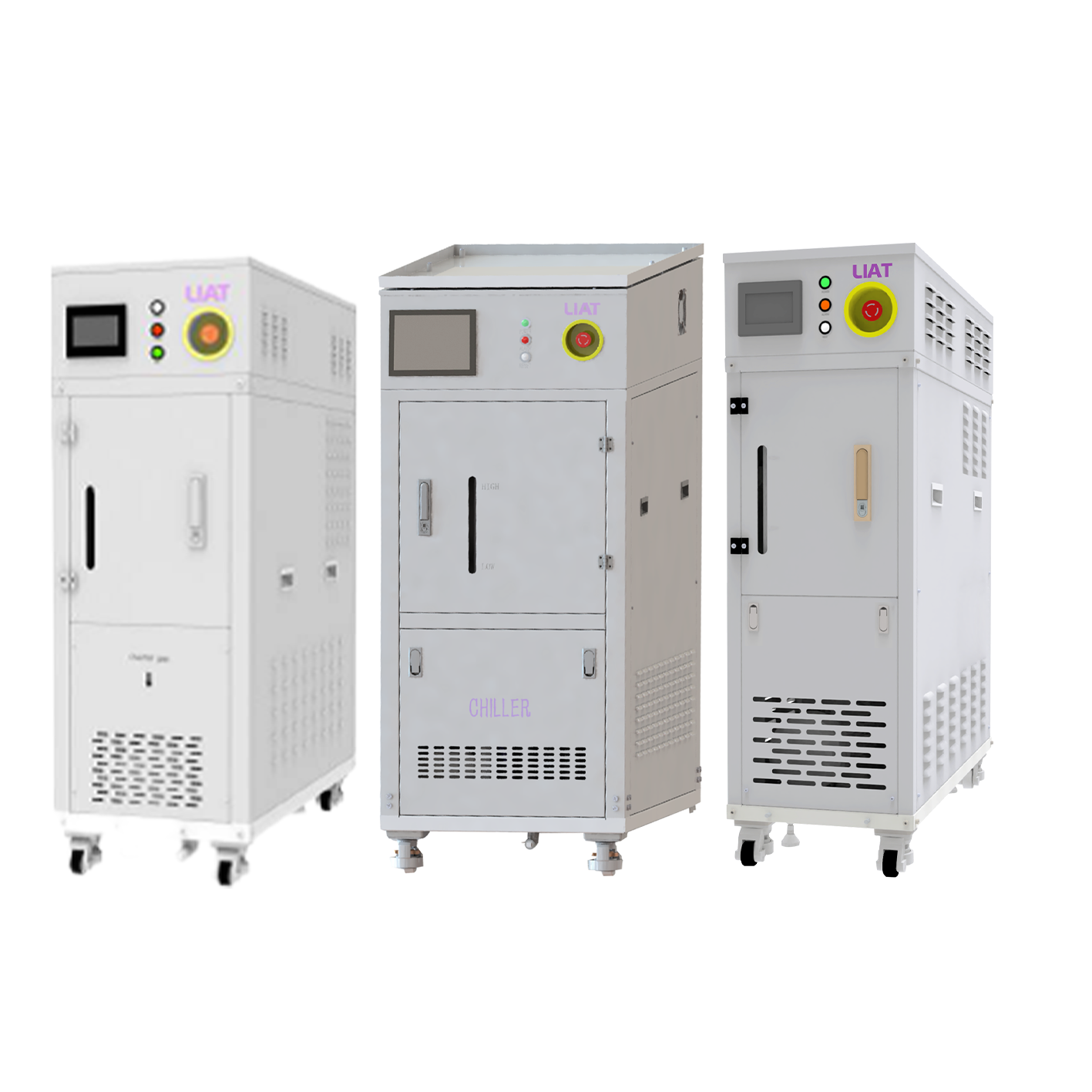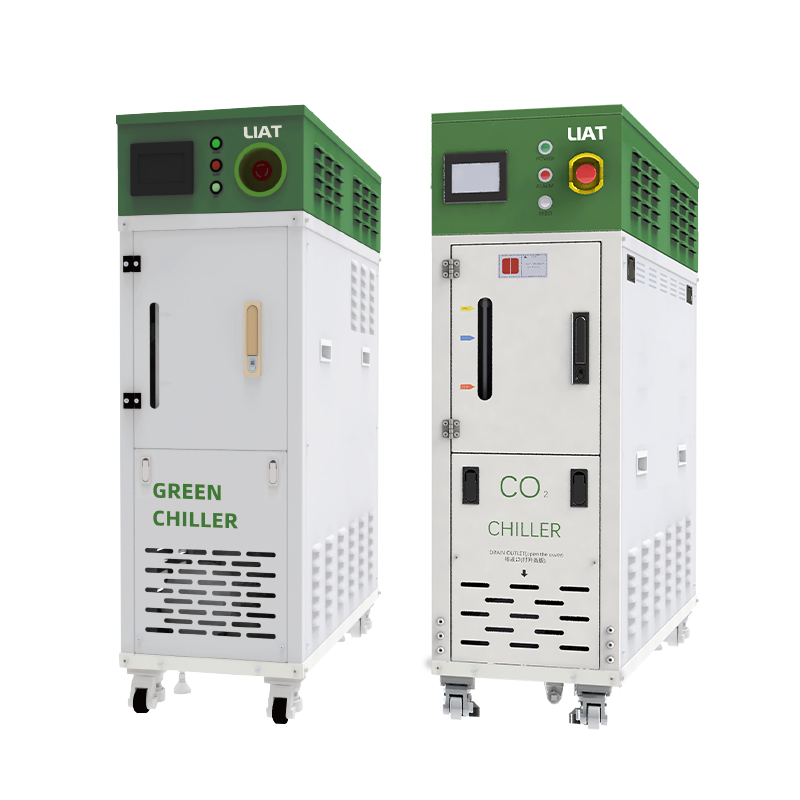A battery air cooled chiller is a specialized appliance that provides cooling for battery systems to achieve optimal temperature performance for a battery's safety, performance, and lifespan. Because batteries, such as those in electric vehicles, energy storage systems, and industrial battery packs, become heat generating systems when charging and discharging, excessive heat becomes a safety hazard. A battery air cooled chiller provides unique advantages in installation, maintenance, and environmental adaptability, as it does not circulate water as in water cooled chillers. The rise in demand for efficient battery cooling called for an answer to the question, "Why is a battery air cooled chiller the best option?”
Business and engineers in the energy and automotive sectors will benefit from understanding the core advantages of a battery air cooled chiller. Compared to water cooled chillers and natural convection systems, a battery air cooled chiller does not require water systems. This makes it cheaper and more efficient.
A battery air-cooled chiller does not need water pipes, pumps, or access to water. This minimizes the chance of leaks, which is important for the batteries. Water leaks can cause short circuits or destroy the battery. Air-cooled battery chillers can work in a wide range of environments. They can work with ambient temperatures from -10°C to 45°C. Because this range does not include freezing temperatures, these chillers can work outdoors in remote areas where you don’t have to worry about water and can be used for off grid energy storage. These battery chillers have lower maintenance needs compared to other battery chillers. They don’t have water filtration systems or heat exchangers and will only require air and fan filter inspections and maintenance. These benefits greatly simplify the battery air-cooled chiller installations and make them cost efficient for battery cooling applications.

A battery air cooled chiller is a vital part of battery cooling systems. It regulates temperature and volume to maintain optimal battery performance. Specifically, it prevents overheating. Relatively high temperature reduces the performance of battery systems, particularly lithium ion batteries which function best between 20°C and 35°C.
Battery air cooled chillers utilize smart temperature monitoring and adjustable fan speeds to maintain a pre-set temperature range and avoid overheating. This overheating causes a reduction in a battery’s storage capacity and may result in a thermal runaway condition. Secondly, battery air cooled chillers promote even distribution of heat. Unlike natural convection, which may leave hotspots in a battery pack, air cooled battery chillers provide even airflow to all battery cells. Not a single battery cell is allowed to 'run hot' by excessive heat. Thirdly, battery air cooled chillers reinforce dynamic changes in the cooling system. Under rapid electric vehicle charging the battery load changes quickly, and battery air cooled chillers will automatically change the cooling capacity in real time to balance the heat the battery is producing to avoid over or under cooling. This dynamic control not only protects the battery from potential damage but also minimizes the energy expenditure of the chiller.
There are now multiple scenarios, and the battery air cooled chiller continues to maintain flexibility and reliability. The first of these scenarios is electric vehicles (EVs) and hybrid electric vehicles (HEVs). In EVs, a battery air cooled chiller cools the traction battery while driving at high speeds or during fast charging to prevent performance degradation and prolong battery life.
Its compact design enables it to fit within the limited spaces of the vehicle engine bays. It is also perfect for stationary energy storage systems (ESS). ESS integrated with solar or wind power plants often work outdoors, and a battery air cooled chiller can adapt to the outdoor weather to keep the battery system cool for energy storage and discharge during steady, unstable, or unstable energy periods. Third, it is for industrial battery applications. The battery air cooled chiller provides continual cooling during heavy-duty operations for frameworks such as forklifts, automated guided vehicles (AGVs), or industrial backup battery packs, and diminishes downtime that battery overheating. Furthermore, it is utilized in small to medium sized battery test labs, where she is required to simulate operating conditions for the battery and test its performance to determine real-world scenarios, the temperature control must be precise as she must control the temperature in order to simulate real world operating conditions for the battery performance testing very accurately.
Factors to consider for….

There are a couple of important things to consider to ensure adequate cooling needs are balanced. To start, the cooling capacity, or cooling power, is the most important feature of a battery air cooled chiller (kW), which is the unit of measure, should be equal to the battery system’s heat output. Be careful, undersized and oversized both have negative consequences.
To understand the necessary cooling efforts, one must calculate the maximum heat a battery can generate from the battery’s capacity, charging rates, and the operating load. Furthermore, for certain scenarios, the noise pollution that the cooling system generates is crucial. For example, the air cooled battery chillers in data center backup batteries and the passenger EVs are designed to work at less than 60 dB to avoid noise pollution. Third, the economic cost is a function of energy efficiency. For long-term cost savings, a battery air cooled chiller will be required that offers a high Energy Efficiency Ratio (EER) and/or Seasonal Energy Efficiency Ratio (SEER) to indicate the chiller’s energy savings. Additionally, the communication of battery air cooled chillers with battery management systems (BMS) will be needed. This communication will allow the BMS to coordinate variable temperature control, which will be a beneficial feature that the BMS will send the chiller real time data of heat generation, which will automatically adjust the cooling efforts.
Let’s discuss the first myth which states, “a battery air cooled chiller is less efficient than a water cooled chiller.” There's a common perception that water is a better coolant because of its high heat transfer efficiency. However, for battery cooling needs, especially for small to medium sized battery systems, a battery air cooled chiller’s efficiency is more than enough. Besides, the energy saved by not running the water pumps tends to offset the small differences in heat transfer efficiency. The second myth is, “a battery air cooled chiller cannot work in high temperature environments.” Today’s battery air cooled chillers have high temperature resistant parts along with variable speed fans that can operate in temperatures of 45°C which is ideal for hot environments. The third myth is “a battery air cooled chiller is prone to dust and debris buildup.” It’s true that air cooled systems filter the air, but most battery air cooled chillers have dust-proof washable air filters and regular filter cleaning (that is, every 1-3 months) is enough to maintain performance.
Myth number four is stating, “Battery air cooled chiller is more costly than other options.” The truth is, the installation and upkeep of battery air cooled chillers are less costly if you evaluate the total cost of ownership (TCO) in the long run, which is approximately 5 – 10 years, battery air cooled chillers are more economical than water cooled chillers.